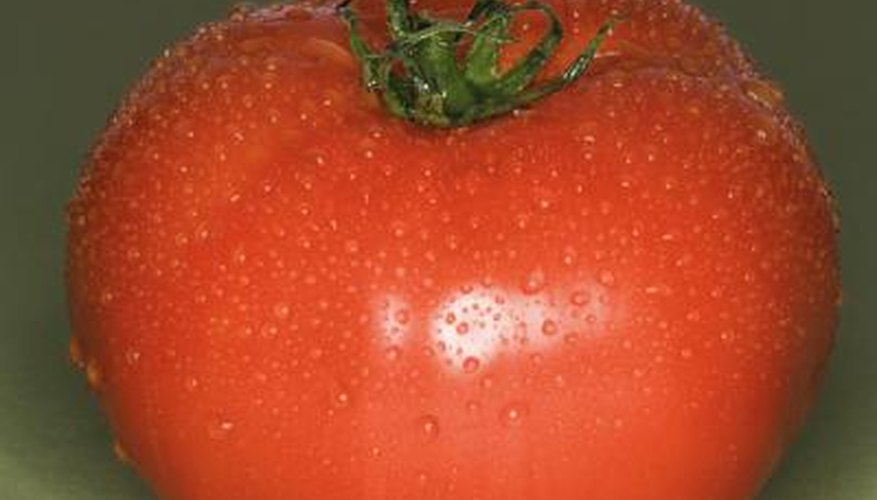Many plants produce substances that prevent or encourage the germination of seeds. Some substances can limit plant density where there is limited space for growth. Other substances can help plants multiply, crowding out other plants. Many fruits, including tomatoes, contain such growth inhibitors which delay the plants' own seed germination until the fruit has decayed enough to remove the inhibitor. The growth inhibitors of some plants such as tomatoes can act on the seeds of other species. Paradoxically, tomato juice, when mixed with other substances, can actually encourage seed germination.
Inhibiting Germination
Farmers have learnt that putting tomato juice on growth media appears to inhibit the germination of other seeds. Research suggested that the plant hormone abscisic acid (ABA) in the tomato fruit might be responsible for inhibiting seed germination. ABA may prevent production of the RNA and growth proteins related to germination in the seeds. It has also been suggested that the glucose (sugar) in tomato may also inhibit the germination of other species' seeds.
- Farmers have learnt that putting tomato juice on growth media appears to inhibit the germination of other seeds.
- It has also been suggested that the glucose (sugar) in tomato may also inhibit the germination of other species' seeds.
Encouraging Germination
Agar, a gel extracted from marine algae, is a common growth medium in science labs. It is resistant to many common fungi. A mixture of agar and tomato juice has been shown to be helpful in encouraging the germination of orchid and other seeds. The mechanism by which this occurs is not well understood, but some speculate that the abscisic acid is diluted enough to prevent inhibition and allow the tomato juice's sugars to provide nourishment.
- Agar, a gel extracted from marine algae, is a common growth medium in science labs.
- A mixture of agar and tomato juice has been shown to be helpful in encouraging the germination of orchid and other seeds.
Extract Tomato Juice to Use at Home
Whether for consumption as food, or as a medium for gardening use, tomato juice can easily be extracted from fresh whole tomatoes. If using the juice as a seed inhibitor, be sure to remove all tomato seeds or crush them completely. To create tomato juice agar for seed propagation, purchase pure agar powder from a scientific supply retailer.
Use Tomato Juice to Harvest Seeds for Next Year
Tomato juice can be used to clean tomato, melon, winter squash, and pepper seeds for winter storage. Harvest seeds when the fruits are ready to eat. Cut tomatoes in half, squeeze the juice into a bowl and dilute the juice with the same amount of water. Add the seeds and stir twice a day for three days, allowing for fermentation. Stop the process as soon as bubbles begin to rise to the top. Pour off the juice solution and debris. Cover the seeds in clean water and gently stir. Good seeds will settle to the bottom of the bowl. Pour off any debris and hollow seeds. Continue rinsing until only clean seeds remain. Strain and pat dry with a paper towel. Dry completely in a shallow pan.
- Tomato juice can be used to clean tomato, melon, winter squash, and pepper seeds for winter storage.
- Harvest seeds when the fruits are ready to eat.
